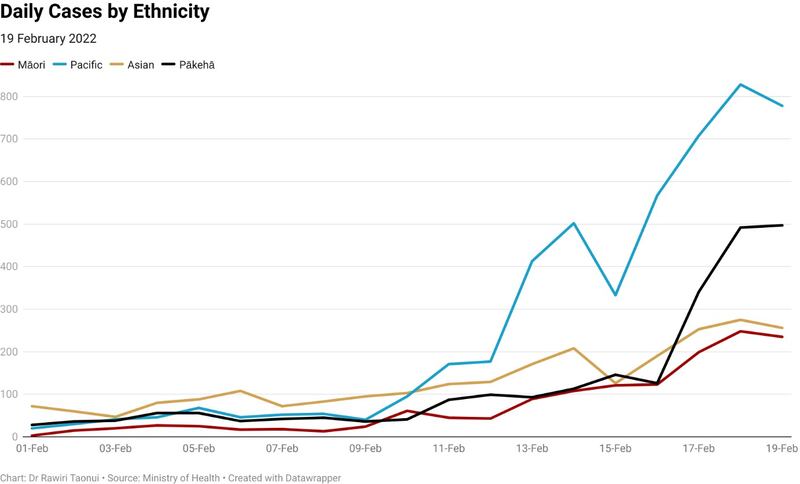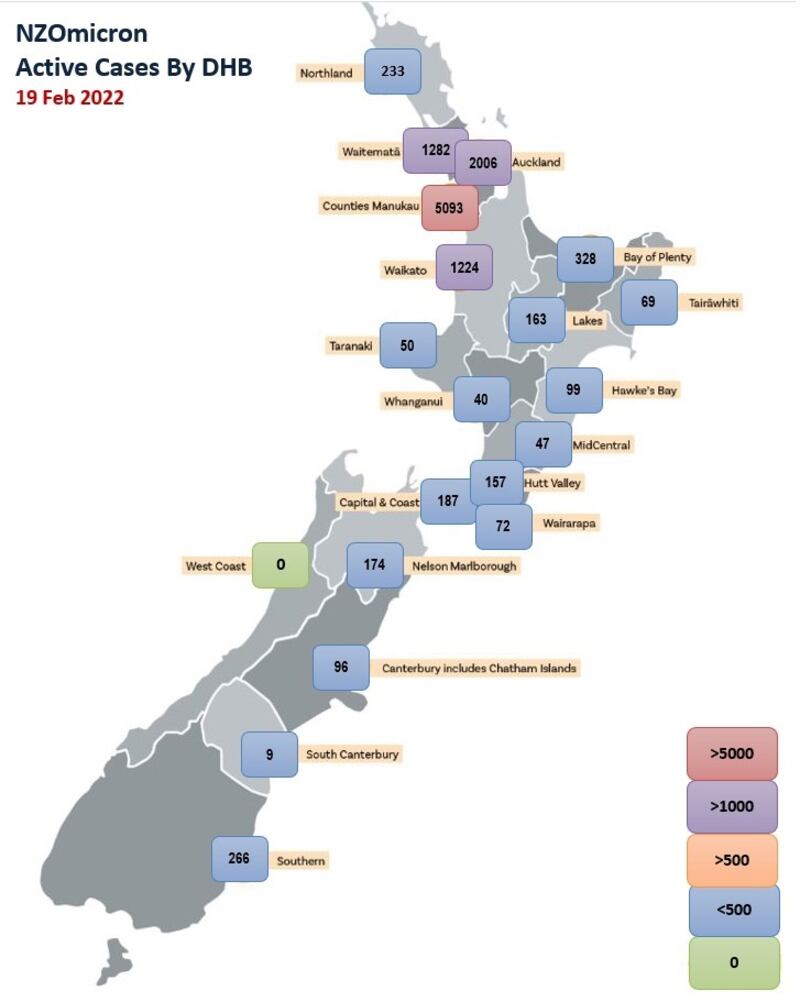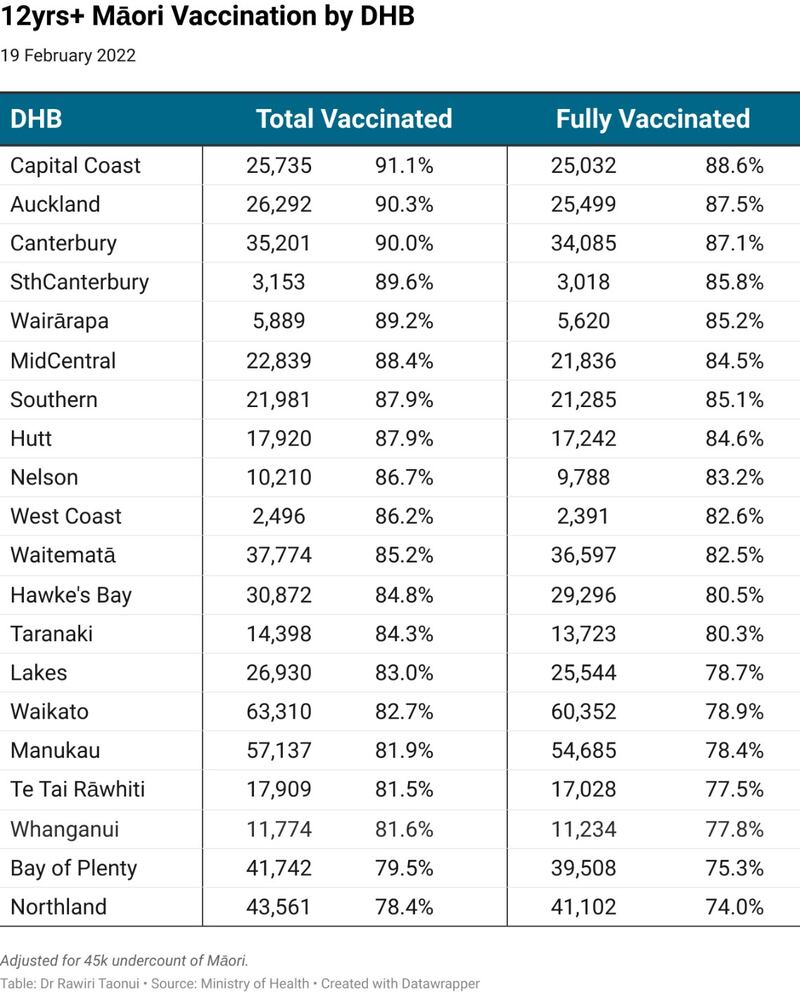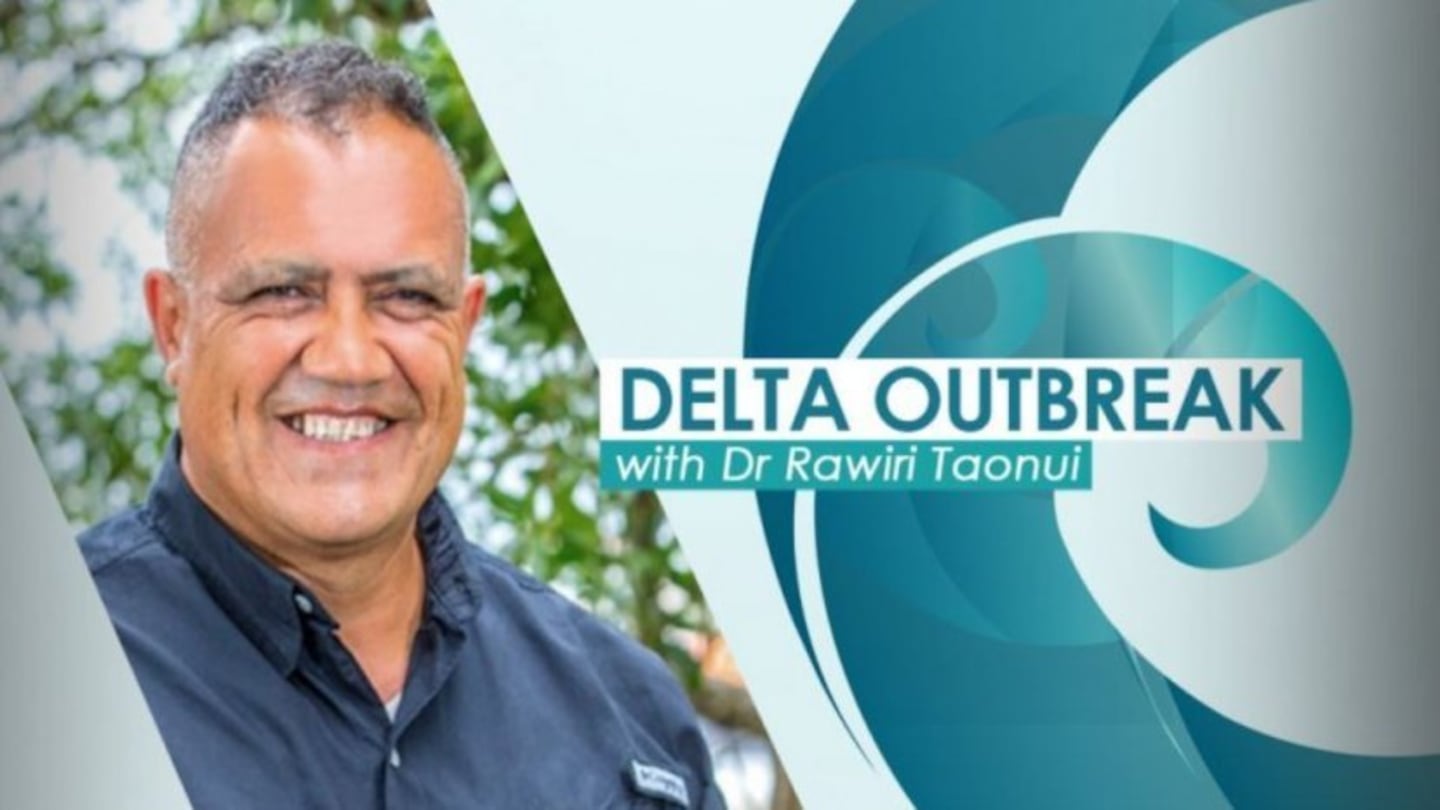By Māori Covid-19 Analyst Dr Rawiri Taonui, in partnership with Te Ao Māori News.
There were 1,901 new community cases on Saturday and 14 in MIQ. Seventy-six people were in hospital, none in ICU and there were no deaths to report.
Active cases now total 12,092 cases, with 11,601 in the community and 491 in MIQ.
Cases by Ethnicity
Māori daily cases fell dramatically during December and January, and Māori remain the lowest number of new daily cases of the four largest ethnic groups during February. However, those numbers are steadily rising with over 1,200 new cases over the last nine days.

Other points of note:
- Numbers in the Asian community dominated new cases at the beginning of February.
- Cases have now surged in the Pacific peoples community, which have had the highest number of new daily cases for the last nine days at over 4,470.
- The Pākehā community is also experiencing a surge in numbers. They have been the second-highest number of cases for four of the last five days and nearly 2,000 new cases over the last nine days.
Total Cases by Ethnicity
Pacific cases dominated the first stage of the Delta uutbreak in August and September. However, total Māori cases passed Pacific peoples in early October.
With 8,350 cases in what is now an Omicron outbreak, Pacific peoples passed Māori last week and now again have the largest number of cases.

Māori totals reflect the very high numbers we had between late September and the end of November, and the remarkable turnaround in the fastest declining number of cases that occurred over the holiday period. The total number of Māori cases as a proportion of all cases has dropped from nearly 50 per cent in late November to less than 30 per cent.
Active Māori cases are the lowest of the four largest ethnic groups. However, Māori remain the highest number of hospitalisations and deaths.
Cases by DHB
Eighty per cent of all active cases are in the three Auckland DHBs (Auckland, Waitematā and Counties Manukau) and the Waikato DHB.
The three Auckland DHBs account for 70 per cent of all cases, with more than 5,000 cases in the Counties Manukau DHB alone.
Numbers are rising in the Northland, Bay of Plenty, Lakes, Taranaki, Whanganui, Hawke's Bay and Te Tai Rāwhiti DHBs. Alongside the Manukau and Waikato DHBs, these are the lowest vaccinated Māori regions.

Māori Vaccinations by DHB
The Ministry of Health reports that 16 DHBs have Māori vaccination rates over 90 per cent. However, when compared to the latest NZ Statistics December 2021 population, their 2020 database is significantly undercounting the Māori population by up to 90,000.
The following is based on a more conservative 45,000 estimate of the undercount:
- There are three DHBs with total (Māori) vaccinations of over 90 per cent. Northland and the Bay of Plenty have the lowest rates.
- Thirteen DHBs have Māori full vaccinations over 80 per cent. Several of our most at risk DHBs remain below 80 per cent.

Vaccination Risk for Māori
The numbers above suggest that the vaccination effort has run into firm resistance in the last 10 to 20 per cent of Māori by DHB.
As Omicron builds, the largest risks lie in the high Māori demographic, high impoverishment and remote areas.
Home Isolation Risk for Māori
Home isolation is a major risk for Māori. In the urban centres, the sheer number of Māori cases will shape the risk meaning some whānau may not receive vital support. In rural areas, the risk lies with living at distance from medical care.
Noho haumaru,
Dr Rawiri Taonui



